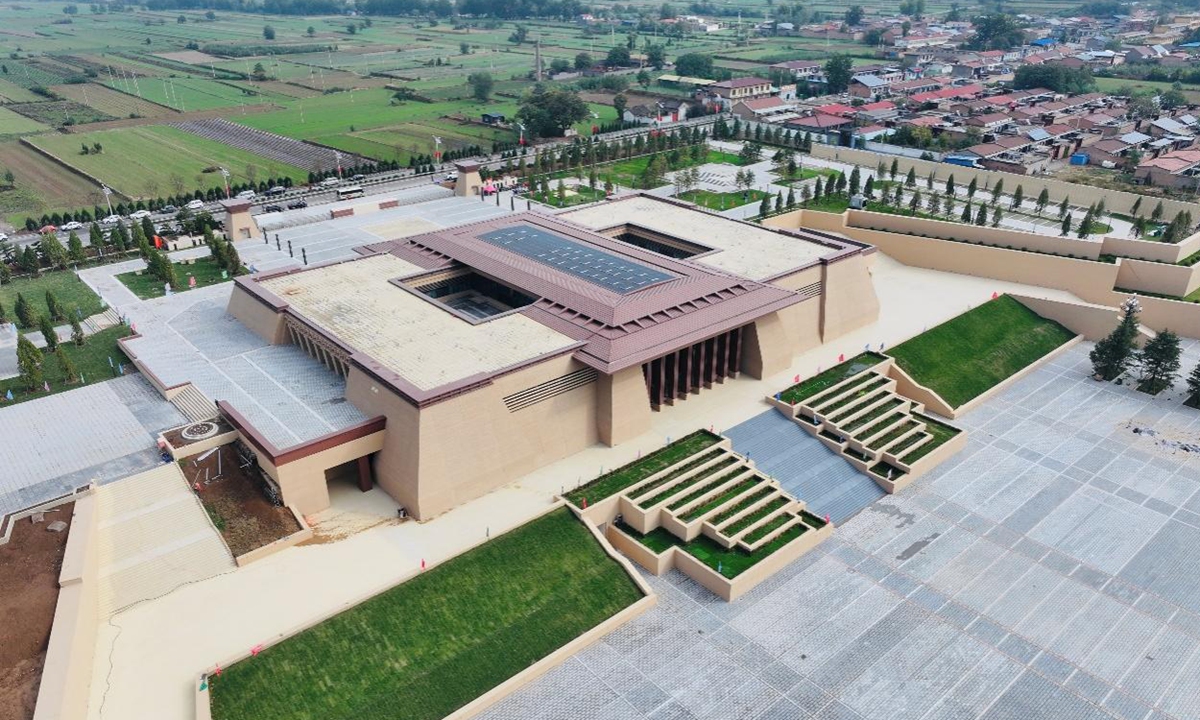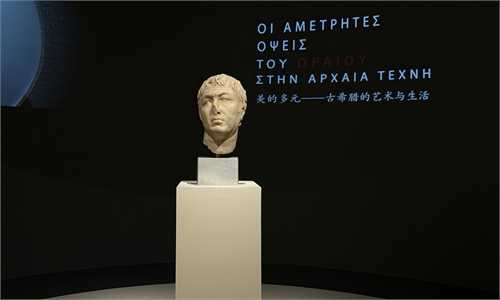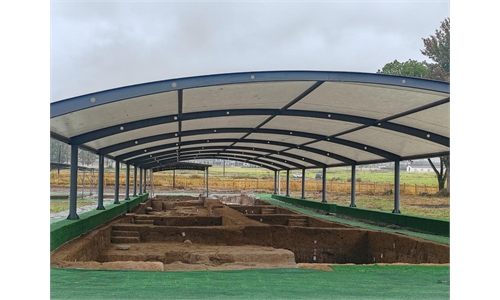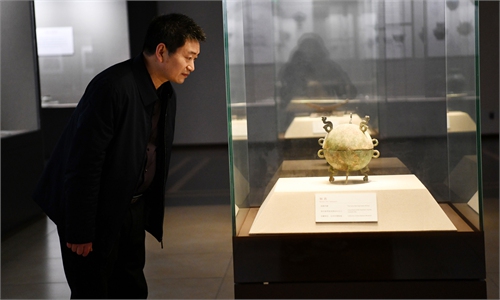ARTS / CULTURE & LEISURE
New museum to open at 4,300-year-old Taosi site
Place possible capital of ancient China: expert

A new museum is set to open at the 4,300-year-old Taosi site in North China on November 12, 2024. Photo: Courtesy of National Cultural Heritage Administration
A new museum dedicated to the Taosi site, which is believed to be most likely the ruins of the capital city during the period of Yao and Shun - two sage emperors dating back more than 4,000 years, is scheduled to open in North China's Shanxi Province next Tuesday. Chinese archaeologists have stated that the museum will serve as a significant platform to showcase the archaeological findings from the Taosi site.Located at the entrance of the Taosi National Archaeological Site Park in Xiangfen county, Linfen, Shanxi Province, the museum covers nearly 10,000 square meters and features an exhibition area of about 5,000 square meters, according to a press release issued by the National Cultural Heritage Administration on Wednesday.
About 230 sets of artifacts, including pottery and jade unearthed at the Taosi site, will be displayed in the museum, providing robust support for the historical records of Taosi culture, which dates back to around 4,300 to 3,900 years.
The Taosi culture emerged in the middle reaches of the Yellow River after the Liangzhu culture, which instead developed in the lower reaches of the Yangtze River. Both sites provide significant clues to the study of early states and of the origins of the 5,000-year-long Chinese civilization, according to reports published by the Xinhua News Agency.
The Taosi site, discovered in 1958 and officially excavated in 1978, is a large settlement site from the late Neolithic period. Despite covering an area of 2.8 million square meters, only about 30,000 square meters have been excavated so far.
Archaeologists have spent over 40 years uncovering unprecedented urban sites, majestic palaces, large cemeteries, and ancient observatories.
Additionally, over 1,300 tombs have been excavated at the Taosi site, uncovering more than 5,500 artifacts that reveal the early stages of Chinese civilization. This reflects how the Central Plains region, represented by Taosi site, absorbed various elements of civilization, advanced rapidly, and led a new era of Chinese civilization over 4,000 years ago, said local official Wang Yanfeng at a press conference on Wednesday.
These relics and artifacts corroborate historical texts, pointing toward the legendary era of Yao and Shun in the Period of the Five Legendary Rulers.
"Yao and Shun might be mythical, but the era they are associated with is certainly not," Gao Jiangtao, a research fellow at the Institute of Archaeology, Chinese Academy of Social Sciences, told the Global Times on Wednesday.
He stated that various archaeological signs indicate that the Taosi culture had reached the early stages of state and civilized society.
The Taosi ancient city site is known for its functional zoning, with clear divisions for palace areas, handicraft workshops, storage areas, cemeteries, and sacrificial areas, making it with the most complete "capital elements" found in a prehistoric period site in China.
"A large number of archaeological discoveries show that Taosi was a political, economic, military, and religious center over 4,000 years ago, a typical representative of a national capital," Gao said, adding that future archaeological teams will focus on analyzing the ethnic groups behind Taosi culture, hoping to further unveil the mysteries between the period of Yao and Shun.




